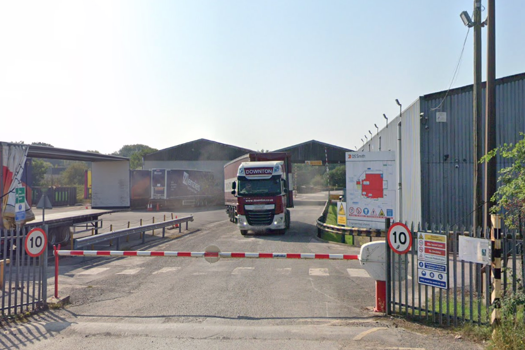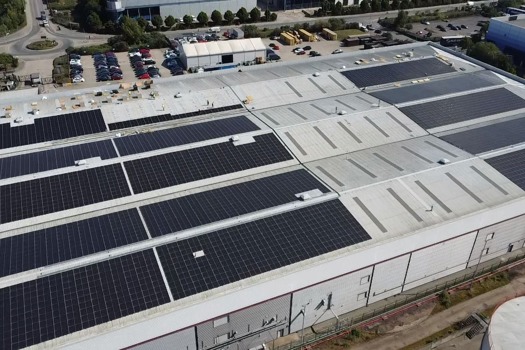What does it do?
The VariJet 106 is a modular single-pass, simplex B1 format sheetfed inkjet press, intended for folding carton work. In its production form it is the first product from a joint venture between German press maker Koenig & Bauer and Italy-based inkjet specialist Durst.
“This is designed for heavy production, 24/7 if required, with a speed of up to 5,500sph,” says Oliver Baar, senior product manager, Koenig & Bauer Durst. It can print personalised/individualised cartons or alternate between ultra-short and medium runs. Cartons for test marketing is another potential application.
The standard configuration will have seven colours (CMYK plus orange, green and violet). However four-colours will be optional. As it is based on the K&B Rapida 106 litho press platform there’s considerable scope for customisation. “Our future roadmap includes a double coating unit, further embellishment options and applications such as augmented reality (AR) and intelligent variable data print for folding cartons,” says Baar. “Additional units – offset or flexo – can be added and can print special inks and coatings when required.”
When was it launched and what markets is it aimed at?
The VariJet 106 was originally announced at Drupa in May 2016 as a joint venture with Xerox, with the intention of using Xerox’s Impika inkjet technology. At the end of 2018 Koenig & Bauer ended the partnership with Xerox and announced a new joint venture with Durst. The VariJet 106 was redeveloped to use Durst’s printing engine, with Fujifilm Dimatix Samba drop-on-demand inkjet heads. The production form of the press was announced in October 2021.
In addition to folding carton converters, target users are in the pharmaceutical, cosmetics, and food industries. According to Baar: “The press combines the strengths of digital inkjet, classic offset printing and inline finishing. This unique flexibility defines the VariJet 106 as a modular, productive and highly automated and cost-efficient printing system for digital packaging printing.”
How does it work?
The main components in order of use are the feeder, primer unit, inkjet print engine (with a “high-precision” vacuum transport belt), dryer, cooling unit, overprint varnishes and delivery (which incorporates another dryer). Sheet transport, feeding, delivery, press control, and makeready use existing Rapida technology. “This results in a press with relatively low makeready times,” says Baar. Each sheet is aligned three times within the machine to maintain registration. The 5,500sph speed is constant with all media thicknesses, ranging from 0.2 to 0.8mm. Finishing options compatible with Rapida 106 can also be used.
There are 24 Fujifilm Dimatix Samba printheads per colour, so the standard seven-colour configuration has 168. The base array and head cleaning is based on the CorruJet 170, Koenig & Bauer’s inkjet press for corrugated which is now in beta trials, itself developed from the roll-fed RotaJet.
The water-based inks are Swiss Ordinance compliant for food safety. Standard offset grade media can be used, with a primer coat applied before it reaches the inkjet engine.
The inks and cleaning fluids come from Durst, while Koenig & Bauer supplies digital web primer and rinse fluid for inkjet capping units.
Drying is by “a highly efficient infrared and hot air dryer, plus a conditioning unit to ensure immediate processing after print”. A post-print coating unit is standard and helps allow immediate post-print finishing. Double coating may come in future.
The digital front-end will use Durst Workflow, Durst Analytics and RIP technology, with potential to link to third party MIS. Durst Workflow is a browser-based solution for pre-press and print production. Analytics lets users view the most important print production data via a web browser, or receive emailed reports.
What’s the USP?
Flexibility is important, says Baar. Combining the benefits of digital inkjet with those of classic offset printing and inline finishing makes it a unique offering. “It has an extremely competitive total cost of ownership (TCO).”
What training and support is offered?
“The VariJet 106 is highly automated and can be used with minimal human interaction, with just one operator and helper required,” says Baar. “Full on-site training and service support is provided as standard.”
What does it cost?
October’s announced price of “sub-€4m” (about £3.3m) is still current says Baar, “despite raw material shortages/price increases”.
He adds that “Koenig & Bauer Durst will provide a full-service contract, including labour and printhead warranty. The ink is based on a pay-by-use model – without any additional click charges. Our TCO cost base will enable our customers to be very competitive.”
Are there any users yet?
No, but discussions are ongoing with potential beta customers, Baar says. Last October the company said it expected the first two betas to be installed during Q1 2022. “As you might image, there is an enormous amount of complexity involved in bringing everything together. We cannot name the parties yet,” he says.
SPECIFICATIONS
Koenig & Bauer Durst VariJet 106
Process Aqueous inkjet
Colours Seven (CMYK plus orange, green and violet) plus primer and coater
Max sheet size 750x1,060mm
Min sheet size 540x750mm
Max print size 730x1,037mm
Print resolution 1,200x1,200dpi
Speed 5,500sph
Paper thickness range 0.2mm to 0.8mm
Pile height feeder 1,250mm
Pile height delivery 1,200mm
Price About £3.3m
Contact Koenig & Bauer Durst www.koenig-bauer-durst.com
ALTERNATIVES
However technically wonderful B1 digital carton presses are, the real world market is still very slow to take them up. Canon tried to get into the market with its liquid toner InfiniStream, but gave up after one placement in 2014. Konica Minolta showed a prototype UV inkjet called KM-C at Drupa 2016 but nothing more was heard again. Heidelberg seemed to have cracked it with its aqueous inkjet Primefire 106, but abandoned it last year.
The only real rivals left for the VariJet 106 are the two Nanography presses, the Landa S10, which has sold in modest numbers, and the similar-but-different Komori Impremia NS40, which has barely sold at all so far, certainly outside Japan and China. These don’t have the multi-unit mixed-process hybrid potential of the VariJet, though what the demand would be for mixing digital with analogue in folding cartons other than for embellishment remains to be seen.
MGI’s AlphaJet is a completely different take on B1 sheetfed inkjet, billed as a complete “print factory,” mixing water-based print units with inline UV digital spot varnishing and foiling, with the intention of adding digital cutting and creasing inline too. It’s currently being beta tested at some live user sites.
Komori Impremia NS40
Print engine Nanography offset inkjet and transfer belt
Printheads Fujifilm Samba
Resolution 1,200x1,200dpi
Ink Landa NanoInk aqueous pigment
Max sheet size 750x1,050mm
Max speed 6,500sph
Colours Four or six, plus inline coater (aqueous or UV)
Media thickness range 0.06 to 0.8mm
Contact Komori Europe +31 30 248 2828 www.komori.eu
Landa S10
Print engine Offset inkjet
Printheads Fujifilm Samba
Inks Aqueous NanoInk
Max sheet size 750x1,050mm
Max speed 6,500sph
Colours Four or seven plus inline coater
Contact Landa Digital Printing +972 73 397 1001 www.landanano.com
MGI AlphaJet
Print engine Inkjet
Inks Aqueous (UV for embellishment units)
Printheads Memjet DuraLink
Format 707x1,000mm
Speed 1,800sph
Max resolution 1,600x1,600dpi
Colours Four or six
Embellishment engine UV inkjet with UV-LED curing
Foiling MGI iFoil digital hot foil
Finishing MGI inline cutting and creasing module
Contact Konica Minolta Business Solutions UK 01268 534 444 www.konicaminolta.co.uk/en-gb










